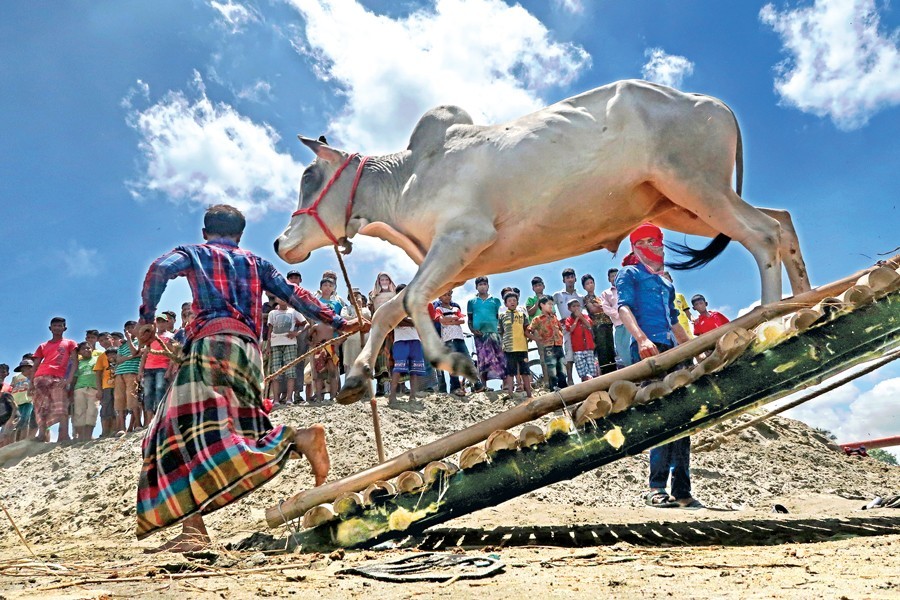Sacrificial animals are in surplus this Eid mainly thanks to commercial and marginal farmers, officials said.
This year a total of 11.58 million cattle are available against the total demand for 11 million for sacrifice, said the Department of Livestock Services (DLS).
A total of 2,910,640 cows and buffaloes, 1,826,419 sheep and goats, and 31,923 others like camel and Arabian dumba will be sacrificed during this Eid.
The animals have been reared under the government's cow-fattening programme at 442,991 farms, according to the official statistics.
On the other hand, 1,546,360 more aged non-productive cows and buffaloes along with 5,273,581 sheep and goats are also being readied for sacrifice this Eid.
More than 10 million cattle, sheep and goats were sacrificed during Eid-ul-Azha in the last couple of years, it showed.
This indicates that the demand for animals is on the up and up every passing feast of sacrifice.
Many households raise cattle, sheep and goats, keeping the Muslims' second-largest festival in mind.
As many as 11,557,000 cattle, sheep and goats were available in 2017.
Of them, over 10 million were slaughtered during last Eid-ul-Azha, according to the DLS.
The number of cattle sacrificed during the 2010 Eid were 27,83,800 and goats and sheep 16,84,300.
It was 45,29,200 and 58,91,500 in 2017 respectively.
Nasir Uddin, owner of Nahid Dairy Farm at Raipura in Narsingdi, told the FE that he has 40 bulls to sell.
He invested Tk 70,000-Tk 80,000 to rear each cow but he is in fear of the influx of imported cattle.
Mr Nasir spoke against cattle import from India against the backdrop of surplus domestic animals.
"The government must act to deter cattle import so farmers like me don't incur heavy losses," he said.
It should take a tough line on cattle smuggling, he said categorically.
Mr Nasir said cattle prices dropped in his area.
Another small farmer, Momin Uddin, said he reared five cows spending Tk 120,000 each in the same area.
To rear cattle, he took out loans from different sources, Mr Momin told the FE.
He also apprehends that cattle prices will go down.
Dr ABM Khaleduzzaman, DLS assistant director (farm), said the monumental sacrifice of cattle during Eid usually generates huge supply of money.
This is an occasion when money circulates fast and changes hands everywhere which is expansionary, thus promoting trade and creating jobs.
DLS director general Dr Hiresh Ranjan Bhowmik said the DLS has been playing a key role in the availability of cattle resources and reducing dependence on animal imports during the festival.
The wheels of economy roll centring on Eid-ul-Azha, he told the FE.
Mr Bhowmik said the DLS ensure proper veterinary services, cattle market management, transport of animals and fitting prices for farmers for sustainable development.
Livestock plays a major role in the national economy with 1.54 per cent contribution to the gross domestic product with a growth rate of 3.42 per cent.
This crucial subsector also generates 20 per cent full-time and 50 per cent part-time employment (DLS 2018).
Livestock works as a cash cow for thousands of marginal farmers who rear cattle for their subsistence and also for steady cash income.
It also contributes to poverty reduction, income generation and bridging the gap between demand and supply of nutrition.


